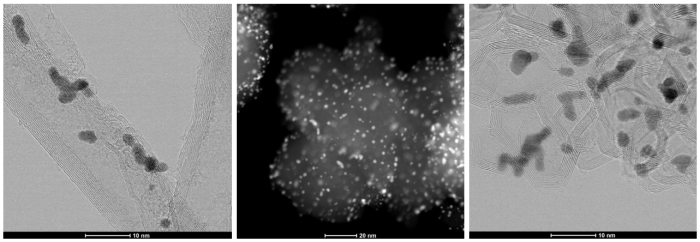Carbon as a catalyst support

Searching for relationships between structure and activity - experimental studies of model systems of catalytic nanoparticles
Experimental studies of model systems of catalytic nanoparticles are carried out in the Materials Research Laboratory of the Silesian University of Technology. One of the main challenges facing science is responding to the growing demand for energy. The most promising and prospective strategy assumes the use of solar and wind energy, and then its conversion into electricity. The generated electricity can be sent directly to consumers or stored in the form of chemical bonds, and then, if necessary, converted into electricity. Energy conversion processes require appropriate electrochemical devices and catalysts. In the early stages of developing new materials for fuel cells, emphasis was placed on the synthesis of the most active catalysts. Although the increase in catalytic activity remains a priority (such materials are required for the widespread commercialization of PEMFC and PEMWE), the importance of catalyst durability has been increasing in recent years.
Due to the great social and economic importance of the problem of energy deficit, scientists undertake a wide and very intensive search for new catalysts, which are then assessed, including their durability. As part of the project, another solution is proposed - the creation of a relatively simple and easy-to-test model system of Pt nanoparticles on a carbon carrier and the analysis of its behavior using advanced electron microscopy techniques in conditions similar to those of a fuel cell. Direct observation will create an opportunity to achieve the main goal of the project - to define new relationships between the structure and operation of catalytic systems, and then to design durable and efficient fuel cells. The project focuses on explaining changes in the structure of the catalytic system (platinum nanoparticles and carbon-based support) during use, by creating conditions similar to those of a fuel cell. These observations should explain why the activity of the catalyst decreases and what can be proposed to reduce this effect. Therefore, during the implementation of the proposed project, special emphasis was placed on the characterization of the structure, also at the atomic level. The structure of the produced catalytic systems (XRD, RS, XPS, TEM, EELS) is comprehensively characterized, and then electrochemical tests are performed. The analysis of catalyst degradation mechanism is based on IL-TEM evolution monitoring of electrocatalysts and in-situ TEM studies in a liquid environment. A supplementary source of information is the measurement of the amount of dissolved platinum using the ICP-MS technique. Combined with the information on the degree of degradation of the carbon carrier obtained by Raman and EELS spectroscopy, it gives a picture of changes in the catalyst structure resulting from the electrochemical tests.
The project "Searching for relationships between structure and activity - experimental studies of model systems of catalytic nanoparticles" is funded by the National Science Center (OPUS 17, 2019/33/B/ST5/02702).
Contact: Mirosława Pawlyta, e-mail: miroslawa.pawlyta@polsl.pl Materials Testing Laboratory, Silesian University of Technology